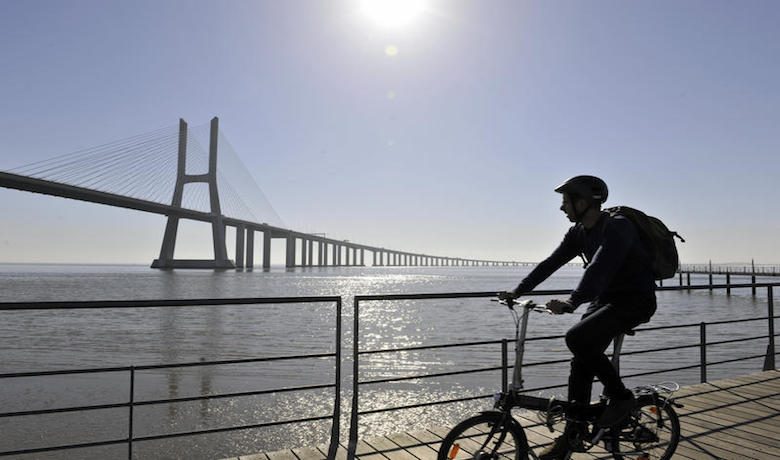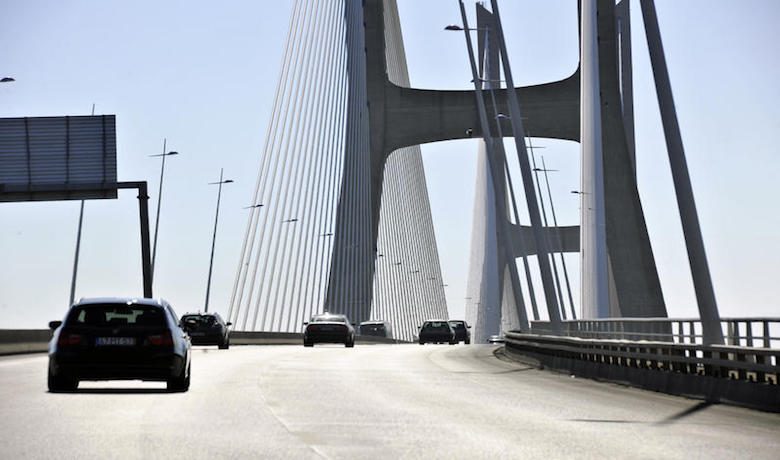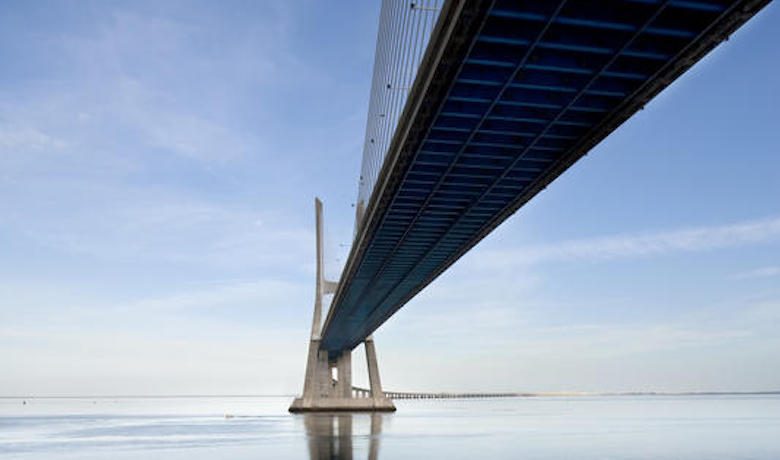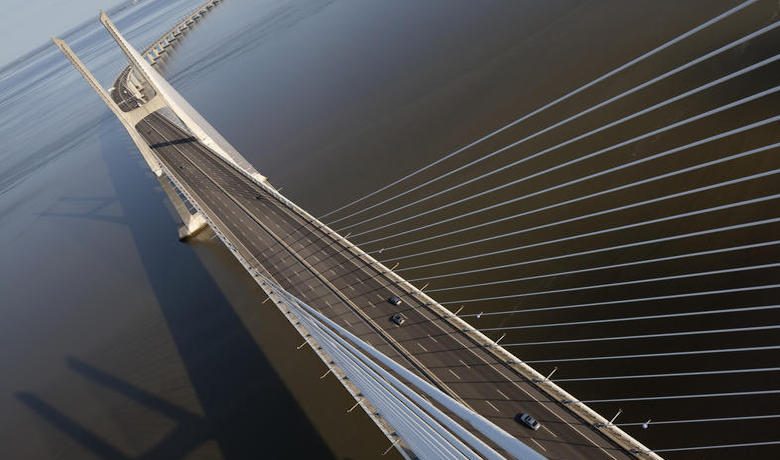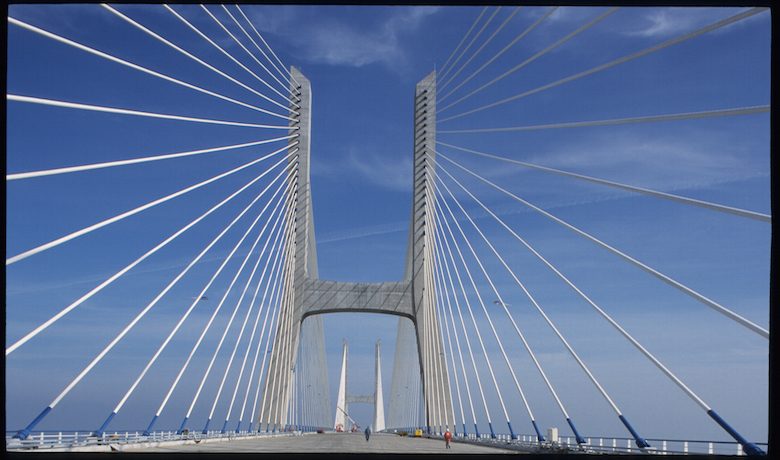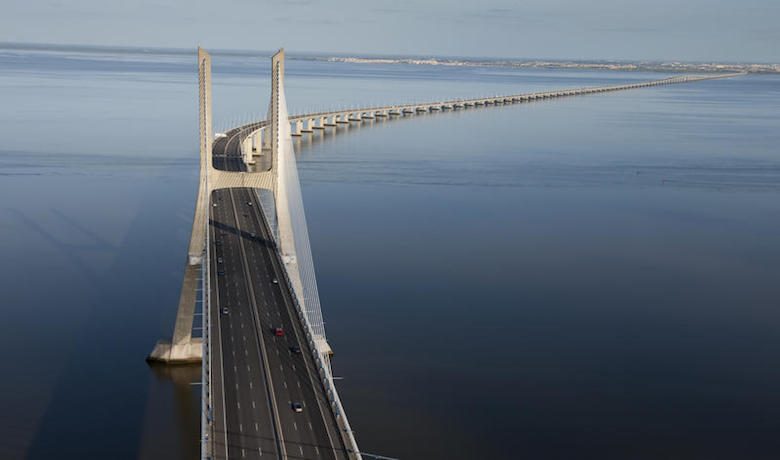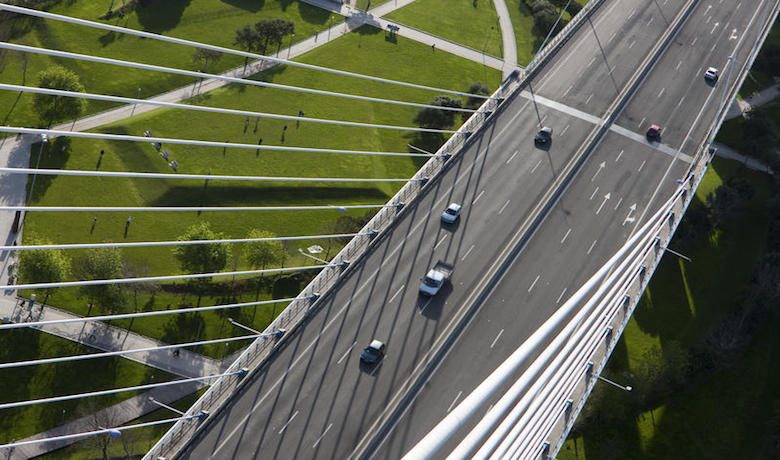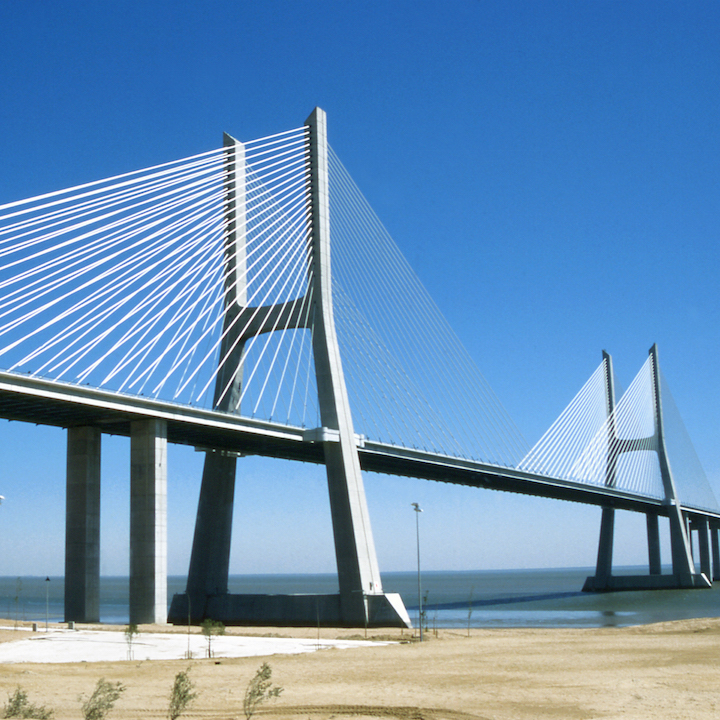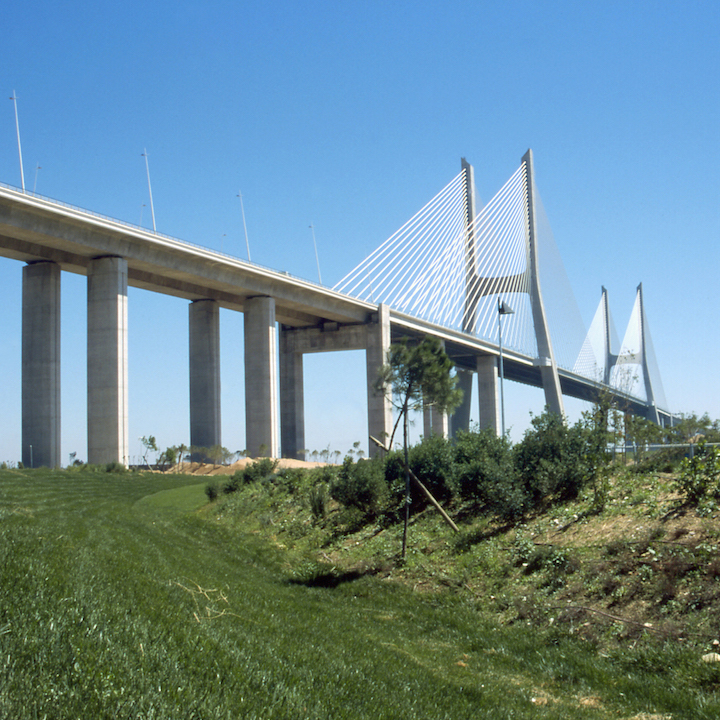Background
In 1991, the Portuguese government put out an international call for tenders for the design, financing, construction and operation of a bridge spanning the Tagus at its widest because the 25 de Abril suspension bridge was no longer adequate. The concession consortium LUSOPONTE, of which Campenon Bernard SGE was part, was awarded the contract in 1994.
The contract required the bridge to be inaugurated at the time of the 1998 Lisbon World Fair, which meant extremely short deadlines. The Novaponte group, headed by Campenon Bernard SGE, was responsible for the construction. The construction started in January 1995, three months before the concession contract was signed. The inauguration of the bridge took place on time three years later.


